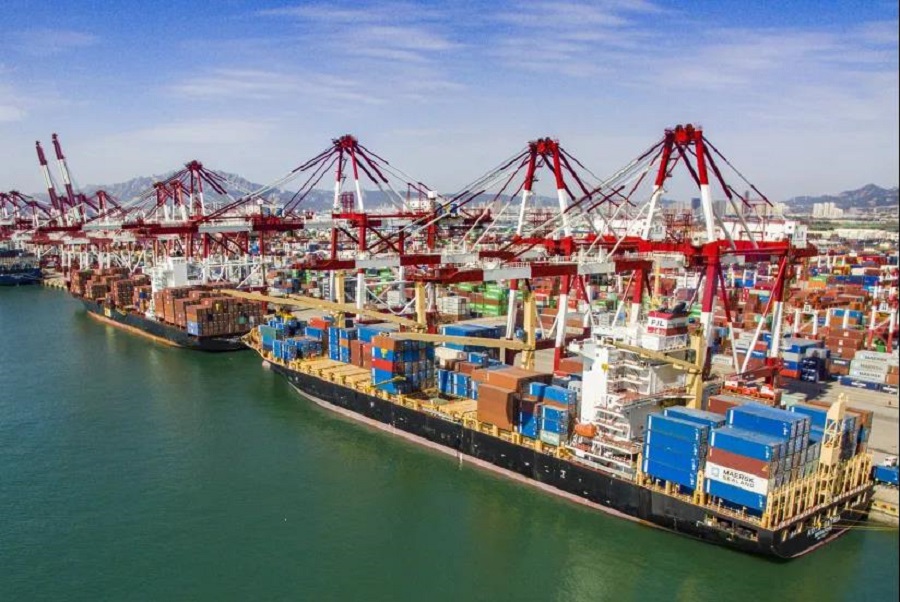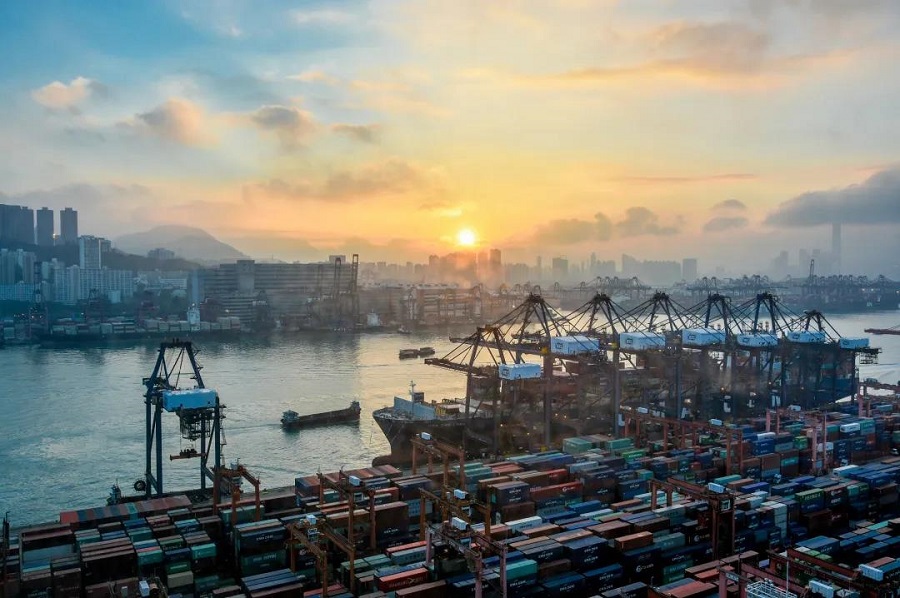Affected by the rebound of the COVID-19, port congestion in many countries and regions has once again intensified. At present, 2.73 million TEU containers are waiting to be berthed and unloaded outside the ports, and more than 350 freighters around the world are waiting in line for unloading. Some media said that the current repeated epidemics may cause the global shipping system to face the biggest crisis in 65 years.
1. The repeated epidemics and the recovery in demand have put global shipping and ports facing important tests
In addition to extreme weather that will cause delays in shipping schedules, the new crown epidemic that began last year has caused the global shipping system to face the biggest crisis in 65 years. Earlier, the British “Financial Times” reported that 353 container ships were lining up outside ports around the world, more than twice the number in the same period last year. Among them, there are still 22 freighters waiting outside the ports of Los Angeles and Long Beach, the major US ports, and it is estimated that it will still take 12 days for unloading operations. In addition, the United States and many other countries may become a major problem to increase their inventory of goods for the upcoming Black Friday and Christmas shopping spree. Experts believe that during the epidemic, countries have strengthened border control and traditional supply chains have been affected. However, the demand for online shopping from local people has increased significantly, resulting in a surge in maritime cargo volume and ports overwhelming.
In addition to the epidemic, the obsolescence of global port infrastructure is also an important reason for the congestion of freighters. Toft, the chief executive of MSC, the world’s second largest container freight group, said that in recent years, global ports have faced problems such as outdated infrastructure, limited throughput, and inability to cope with ever-larger ships. In March of this year, the “Changci” freighter ran aground on the Suez Canal, which hindered global cargo transportation. One of the reasons was that the “Changci” was too large and blocked the river course after it leaned and ran aground. According to reports, in the face of such a huge cargo ship, the port also needs a deeper dock and a larger crane. However, it takes time to upgrade the infrastructure. Even if it is just to replace the crane, it takes 18 months from placing an order to completing the installation, making it impossible for local ports to make timely adjustments during the epidemic.
Soren Toft, CEO of Mediterranean Shipping (MSC), the world’s second largest container shipping group, said: Actually, port problems existed before the epidemic, but the old facilities and capacity limitations were highlighted during the epidemic.
At present, some shipping companies have decided to take the initiative to take action to invest in the port, so that their freighters can obtain priority. Recently, HHLA, the operator of the Hamburg terminal in Germany, said that it is negotiating with COSCO SHIPPING Port on a minority stake, which will make the shipping group a partner in planning and investing in the construction of terminal infrastructure.
2. Shipping prices hit a new high
On August 10, the Global Container Freight Index showed that shipping prices from China, Southeast Asia to the east coast of North America exceeded US$20,000 per TEU for the first time. On August 2, the figure was still $16,000.
The report quoted experts as saying that in the past month, Maersk, Mediterranean, Hapag-Lloyd and many other major global shipping companies have successively raised or increased a number of surcharges in the name of peak season surcharges and destination port congestion charges. This is also the key to the recent surge in shipping prices.
In addition, not long ago, the Ministry of Transport also stated that with the repeated epidemics abroad, serious congestion has continued to occur in ports in the United States, Europe and other places since the fourth quarter of 2020, which has caused chaos in the international logistics supply chain and reduced efficiency, resulting in a large area of ship schedules. Delays have seriously affected operational efficiency. This year, the shortage of international shipping capacity and rising freight rates have become a global problem.
3. The “Golden Week” blank sailing plan may further push up freight rates
According to reports, shipping companies are considering launching a new round of blank voyages from Asia around the October Golden Week holiday in China to support their significant increase in freight rates in the past year.
In the past few weeks, the record high freight rates of major routes across the Pacific Ocean and Asia to Europe have shown no signs of retreat. The previous closure of Ningbo Meishan Terminal has exacerbated the scarce shipping space before the Chinese National Day holiday. It is reported that the Meishan Wharf of Ningbo Port will be unblocked on August 25 and will be restored as a whole on September 1, which is expected to alleviate the current problems.
Post time: Aug-24-2021




.png)
.png)
.png)
.png)